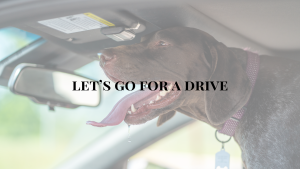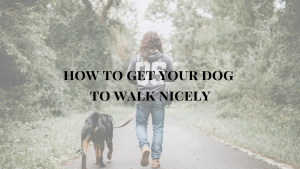Behind every behaviour lies an emotion.
Talking about emotions in dogs is something relatively new in the scientific world of dog behaviour. The neuroscientist Gregory Berns was one of the first to establish that dogs really does empathize with us and that what we feel can be transferred down to our dog and make them feel the same. Do they love us? You bet!
But what are they feeling themselves and how do they portray those feelings, and more importantly how do we as humans learn how to read and understand those emotions?
A dog’s emotions

A dog has emotions just like we do, and as we know from ourselves, emotions are never neutral and can vary in intensity. The core emotions help your dog to survive and are beneficial, it is when an emotion turns into a permanent state that problems can arise.
Just like us, a dog can go from content to super happy or depressed and sad to downright frustrated. Emotions impact how their brain is structured and how it functions through the signals of different neurotransmitters, which in return shapes their personality. Different emotions provoke different behaviours and different cocktails of neurotransmitters are wired in different situations. This creates quick changes in the different emotional states, making it hard to specifically pinpoint an exact emotion to an exact behaviour.
How can you help your dog with his/her emotions?

The first is to learn to read their body language (Learn how to read dog body language here) as that is our dogs most pronounced communication with us when portraying how they feel.
The second is to learn how to teach our dogs. It has been shown that by using positive reinforcement we help our dog stay more balanced. Both low and high arousal in dogs affect their ability to learn, so it is our job as their human to find that golden in between, in order to optimize their learning. By using treats in our training, we also make the experience more pleasant. This increases the dogs’ willingness to stay focused on the training.
By providing a strong positive base for our dogs it can help them handle the always unavoidable unpleasant scenarios that exist in our environment and that we cannot control. Your dog will get scared or frustrated at some point in his/her life (Read more about fear in dogs here), but by having that strong positive base with consistent positive reinforcement it is easier for them to bounce back and not enter a permanent state of fear or stress and thereby also avoiding a range of behavioural problems (Read more here about creating happy associations).
Emotions also have the amazing ability to spread backwards.
What does that mean?
Well, say that your dog loves to play with his/her toys, but does not like to ride in the car. What if you play with the toys in the car and then take a ride? Then the car ride becomes a positive experience because you first did something that your dog really likes. The positive emotions around the play has been transferred to the car so that instead of having negative emotions around the car, your dog now has more positive emotions (Read more about how to make the car ride positive here).
Sadly, it can also go the other way. Fireworks might go off right when you and your dog step out of your door. The next time you have to take your dog out, (s)he refuses to go through the door as the last time (s)he did that it was scary because of the fireworks going of. In reality (s)he is afraid of the fireworks but the fear or the negative emotions has been transferred to the door.

However, if you have given your dog that positive base (s)he is more likely to bounce back from a scary situation, meaning that because (s)he have had a positive emotion first around the door, (s)he is able to bounce back faster from the fear and again associate the door with happy associations, like when the door opens it means I get to go on adventures with my human.
Stress and fear are not always negative. A little stress, the so-called eustress can be positive for your dog and the fear then helps the dog to survive by staying away from things that can be truly dangerous for your dog. The problem arises when stress and fear becomes a more permanent feeling in your dog and starts affecting their behaviour in a more severe manner, inhibiting your dog’s welfare.
It is unavoidable for our dogs to not sometimes get scared or stressed in their life but by giving them a solid positive foundation filled with positive associations and emotions with as many different things as possible, we can avoid the development of permanent stress and fear related problems, improving our dog’s welfare overall and creating a better life for both us and our dogs (Read more about dog socialization here).
First impressions lasts so let’s make it a good one!
Concluding that by understanding the underlying emotional state of our dogs we can prevent a potential behaviour problem and not only improve both our dog’s and our lives, but also improve the bond between our dog and ourselves (Read more about the relation between human and dog here).




